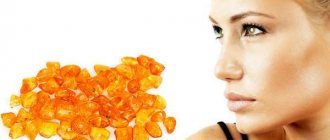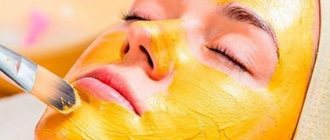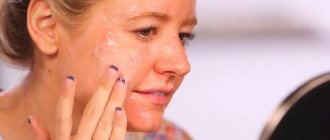What is the Hyalual redermalization effect based on?
Age-related skin changes are caused by the influence of three factors:
- skin dehydration;
- exposure to free radicals on the skin;
- a decrease in the intensity of metabolic processes, which in turn slows down the production of collagen in the skin.
Unlike other rejuvenation procedures, Hyalual redermalization works in three directions at once, including:
- restoration of water balance;
- active blockade of free radicals;
- normalization of biochemical processes in skin cells.
Hyaluronic acid is known for its moisturizing properties, thanks to which it effectively fights the first cause of aging.
Succinic acid is able to block free radicals and also has an antioxidant effect with powerful restorative properties, which helps stop the second factor of aging. It also stimulates the production of collagen and elastin at the cellular level, which prevents the action of the third factor.
Additionally, succinic acid has been clinically proven to reduce pigmentation, making it an excellent skin tone enhancer.
What it is?
Hyaluronic peeling is a unique procedure in cosmetology that allows you to clean, moisturize and improve the appearance of the skin. Thanks to hyaluronic acid, the skin gets rid of impurities and dead cells, and pores are deeply cleansed. This type of peeling is unique because it avoids dehydration of the epidermis.
In a short period of time, hyaluronic peeling can truly rejuvenate your skin, without damaging it. Thanks to this procedure, the skin becomes soft, clean and moisturized, and wrinkles begin to gradually smooth out.
Drug concentration options
The drug is presented in three concentrations
Hyalual 1.1% for young skin. Used to prevent aging. Improves complexion, makes skin less oily, helps fight acne. Good for preparing skin before chemical peels.
Hyalual 1.8% is indicated for skin after 35 years. Provides rejuvenation and lifting of the skin, smoothes out fine wrinkles, improves blood microcirculation.
Hyalual 2.2% is the drug with the highest concentration. Used to smooth out skin texture, replenish lost volume, and correct facial contours.
Medicinal properties
- Moisture retention. Hyaluronic acid is able to retain a large amount of fluid in the layers of the epidermis, making the skin softer, smoother and more elastic. Due to the high moisture content inside the skin, wrinkles are smoothed out, making the face look younger and more toned.
- This substance can protect the skin from negative environmental influences and helps reduce inflammatory processes, which is why hyaluronic acid is often used in the fight against acne and acne. The substance has excellent disinfecting properties that help get rid of acne and blackheads on the face.
- I would like to note that the substance is often used during the treatment of oral ulcers, as it has a strong anti-inflammatory effect.
- Hyaluronic acid is often used in the fight against joint diseases.
- The substance is very important for the female reproductive system, as hyaluronic acid helps maintain eggs in a healthy state.
- Hyaluronic acid helps in the speedy healing of wounds, abrasions and burns. The substance perfectly disinfects the affected area, promoting faster cell regeneration.
- Thanks to this substance, free radicals are neutralized. This suggests that the risk of malignant tumors is significantly reduced.
We recommend: List of contraindications for facial peeling. Who should not undergo the procedure and what complications may occur?
Cosmetologist's advice
Before the hyaluronic acid peeling procedure, it is recommended that you familiarize yourself with several tips from leading cosmetologists. This will help reduce the risk of side effects.
The main advice is to carry out peeling only in special rooms or clinics where experts work with the appropriate supporting documents. This is due to the fact that the concentration of hyaluronic and fruit acid is determined individually, based on the condition of the person’s skin.
In addition, only the master will be able to determine the number of sessions required and their duration. If you carry out the procedure at home, you can get severe burns to the skin, which are very difficult to correct.
It is important to familiarize yourself with contraindications before the procedure. The list includes:
- pregnancy (breastfeeding);
- the presence of inflamed areas or infections;
- presence of open wounds.
In addition, it is possible that a person may be allergic to a certain component of the composition. Do not be alarmed if slight redness is visible on the skin after peeling - such a reaction is normal. However, if the redness does not go away for a long time, I recommend consulting a doctor.
Expert opinion
Anastasia Zaslavskaya
Dermatologist, cosmetologist
The best time for hyaluronic acid peeling is autumn or winter, when sun activity is at a minimum.
How to make at home
It is easy to use HA at home. Use low molecular weight serums and creams. They contain HA and microparticles that easily penetrate the pores.
in its pure form in ampoules or powder . To prepare a gel from powdered hyaluronate, mix 2 g of acid and 30 ml of water (distilled) and refrigerate for 1 hour.
Stir occasionally until lumps disappear. A viscous gel is obtained for 2–3 operations.
Apply the product to previously prepared skin, rub in for 5–10 minutes and wait until completely absorbed. Use before bed for 10–15 days , then you need to take a two-week break.
Several popular recipes for hyaluronic facial peeling.
With hyaluronate
1 ml of hyaluronate is added to 200 ml of cream for any skin type. Apply for 14 days, then interrupt the process for 14-15 days.
Glycerin
Mix 27 g hyaluronate powder, 60 g quinine powder, 30 ml glycerin, 30 g zinc oxide and dilute with water to obtain a thick cream.
Apply the mixture to cleansed skin after 30 minutes. remove it with a towel soaked in warm water.
Apply 2 times a week at night. After 10 procedures - a break for 14-15 days.
With kefir
Add 4 drops of HA from an ampoule to 35 ml of kefir or yogurt. Apply to the treatment site after 15 minutes. remove using a warm compress.
Do facial peeling with hyaluronic acid and kefir 2-3 times a week , but no more than 10 procedures, then a break is required.
Indications and contraindications for hyaluronic peeling
Among the main indications for the procedure are:
- Uneven pigmentation of the epidermis, sharp boundaries of spots.
- Prevention and elimination of signs of aging that appear as a result of the influence of the age factor or negative environmental conditions.
- The epidermis is oily with enlarged pores.
- Acne and elimination of its consequences.
- Unhealthy dull complexion.
- Dehydration of tissues, leading to sagging epidermis.
- Formation of areas of skin peeling.
- Hypersensitivity of the epidermis.
Conditions under which hyaluronic peeling is not performed:
- Viral infections in the acute stage (herpes, warts, molluscum contagiosum).
- Severe somatic diseases and acute respiratory infections.
- Violation of the integrity of the epidermis. At least a week must pass from the moment of injury to the day of the procedure.
- Pregnancy and lactation period.
- Time of year with increased solar activity.
- Individual intolerance to the components of the composition.
- In case of rosacea, the procedure can be carried out, but with extreme caution and only under the supervision of an experienced specialist.
The use of hyaluronic acid in cosmetology
Hyaluronic acid is a chemical substance that is part of the skin tissue and promotes their regeneration. It maintains an optimal level of moisture in the epidermis and dermis, maintaining skin firmness and elasticity. After 25 years, the amount of this component in the body decreases sharply, and under the influence of ultraviolet radiation this process accelerates. The epidermis becomes dull, begins to become wrinkled, the tissue becomes thinner and becomes more susceptible to external factors.
Thanks to the developments of scientists, hyaluronic acid was isolated almost a hundred years ago, and now they have learned to synthesize it artificially. Now this component is widely used in cosmetology when creating care products, and one of them is hyaluronic peeling.
Despite its synthetic origin, modern hyaluronic acid is not inferior in its properties to natural one and even surpasses it in some aspects. The most important of them is the purity of the substance. The product, obtained artificially, does not contain allergens and bacteria, which allows you not to be afraid of infections or unwanted reactions.
Peeling with fruit acids
You can make an appointment with a specialist using the form or call the phone number Moscow, Kashirskoye Shosse, 24, building 8
MAKE AN APPOINTMENT
Ask a Question
Timely, careful cleansing of the skin is the key to youth, health and beauty. Modern cosmetology offers a wide selection of peeling products. Some of the most effective, but gentle, are compositions based on fruit acids. Properly selected components not only help cleanse the skin, but also eliminate pigmentation, post-acne, and eliminate signs of aging.
If you want to preserve and maintain youthful and healthy skin, we suggest you sign up for peeling with fruit acids at the medical cosmetology department. When developing drugs, our specialists are guided by the principles of GLP (“Good Laboratory Practice”). The experience of dermatovenerologists and cosmetologists ranges from 5 to 15 years.
Indications for fruit peeling and results.
- Peeling with fruit acids is indicated for skin pigmentation disorders (presence of spots) - after therapy, complexion evens out.
- Fruit acid-based formulations are effective in treating a variety of rashes, including acne, mild acne, and dermatitis. After peeling, both the rashes themselves and the manifestations of post-acne are eliminated.
- Peeling with fruit acids is indicated for dry and flaky skin, as well as for signs of aging - the procedure promotes sufficient hydration and saturation of cells with oxygen.
- Another indication for peeling is increased oily skin; after therapy, the production of substances is normalized.
- Indications for peeling are also the presence of blackheads and enlarged pores.
Types of fruit acids.
To carry out peeling with fruit acids, combinations of the following substances are used:
-
Lactic acid.
Contrary to the name, this substance is found not only in dairy products, but also in blueberries, apples, and tomatoes. The composition promotes rapid healing and hydration of tissues. - Lemon acid.
This is one of the main components of peeling products. Found naturally in lemon, orange, grapefruit, lime, pomegranate, and pineapple. In combination with tartaric acid, this substance helps eliminate age spots. In addition, citric acid has bactericidal and antioxidant effects. - Wine acid.
This fruity substance can be found in ripe grapes, old wine, and also in oranges. In peeling compositions, this acid is used as a means of moisturizing the skin, improving complexion, and slowing down aging. - Apple acid.
The substance is found in apples and tomatoes. This acid promotes the delicate exfoliation of old cells, supports tissue development, having a beneficial effect on water and fat balance. - Glycolic acid.
In nature, this component is found in cane and green grapes. Due to the low molecular weight of the particles, this substance is able to penetrate to the deepest layers of the skin. As a result, complexion improves, even the most pronounced age spots are eliminated, and aging slows down.
Contraindications to fruit peeling.
Cleansing (peeling) with fruit acids should be avoided under the following circumstances:
- intolerance to the components of the peeling product (you should consult your doctor on this issue);
- impaired integrity of the skin in the area of intended exposure, inflammation;
- fresh tan (it is necessary to avoid prolonged exposure to the sun in advance; the same regime is temporarily maintained after fruit peeling);
- skin diseases - psoriasis, dermatitis, herpes;
- taking certain medications (you need to check with your doctor);
- pregnancy;
- increased skin sensitivity (possible burns).
How to peel with fruit acids.
- Exploratory survey.
At this stage, the condition of the skin is assessed and the desired result is formulated, based on the data obtained, a unique composition is prepared based on fruit acids, vitamins and additional reagents necessary to increase the effect. - Skin preparation.
Makeup is removed (it is advisable to avoid it altogether on the day of the procedure), then the surface of the skin is disinfected and degreased. These measures prevent the development of inflammatory processes and infections. - Application of drugs.
The prepared composition is applied to the skin. The concentration of the composition depends on whether this procedure is the first in the course or one of the subsequent ones. - Removal of drugs.
The applied composition is removed, the substances are neutralized. Next, moisturizing and soothing agents are applied to the skin to relieve itching and speed up recovery.
If you value your beauty and health, we invite you to make an appointment with a dermatocosmetologist by phone.
Back
Ask a Question
Step-by-step instructions for application from cosmetologists
Preparatory stage
The first step is to thoroughly cleanse the skin and prepare it for the effects of hyaluronic acid. The face is cleansed with an alcohol-free tonic, water or a special disinfectant.
Thanks to this step, residual fat and other impurities are removed from the surface of the epidermis, the upper layers of the skin are softened and some dead particles are removed. It is easier for the main component to pass into open pores, which means that the peeling effect will be as effective as possible.
Application
- The composition is prepared in advance before applying it to the skin. Hyaluronic peeling is a crystalline powder that must be diluted with water to form a gel that resembles liquid sour cream in consistency.
- The resulting composition should be applied to the skin of the face, neck and décolleté.
- The peeling must be left on the face for half an hour so that all components penetrate deep into the epidermis.
- Hyaluronic peeling does not need to be washed off with water; it is removed from the skin surface using special solutions. This helps to avoid injury to the upper layers of the epidermis.
Post-peeling care
- After completion of the procedure, the skin is treated with saline solution. If necessary, apply soothing masks or serums to avoid redness on the skin.
- After completing the procedure, be sure to apply products that provide ultraviolet protection to avoid the appearance of pigmentation on the skin.
- After peeling, you are prohibited from taking salt baths or visiting baths or saunas for a week. You cannot use cosmetics (powder, foundation, etc.) for about three weeks to avoid irritation and inflammation of the skin. Try to avoid direct sunlight on your skin.
We recommend: Peculiarities of peeling application. How often can you do the procedure on your face?










